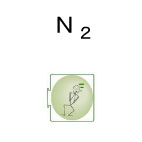| Case Name |
Oxygen deficiency accident due to mistaken connection of nitrogen gas instead of air during cleaning work of a kerosene tank |
| Pictograph |

|
| Date |
February 19, 1991 |
| Place |
Sakai, Osaka, Japan |
| Location |
Refinery |
| Overview |
An oxygen deficiency accident occurred when workers put on air line masks for cleaning work at an open kerosene tank due to connecting nitrogen to the air line of the mask by mistake. This was human error. However, it is a problem that a fail-safe and fool-proof approach had not been taken, which would prevent human error |
| Incident |
During an inspection before cleaning work of a kerosene tank with a floating roof, an oxygen deficiency was caused on connecting the air line mask. |
| Processing |
Storage |
| Substance |
Nitrogen, Fig2 |
| Type of Accident |
Health hazard |
| Sequence |
On February 7th, 1991: Preparations for overhaul inspection were smoothly underway. On February 19th: Sandblasting work for the tank base plate inspection was scheduled. About 10 a.m.: One worker was outside the tank for surveillance for the work in the tank, and four other workers were at positions inside the tank. Three of them fell down while they were wearing their own protectors in preparation for the work. They were sent to an emergency hospital by an emergency team. It became an industrial accident in which one worker died and two others were hospitalized. Protectors are necessary for sandblasting work, because a large amount of minute dust particles disperse. |
| Cause |
It seems to be a typical human error. The air hose of the air line mask was mistakenly connected to nitrogen gas piping. The piping arrangement was complicated and nitrogen piping was close to oxygen piping. Imperfect field validation and imperfect action indications could be indirect causes of this accident. |
| Countermeasures |
From the viewpoint of preventing similar accidents, the outlets of air piping in the refinery are checked thoroughly, and indications are prominently displayed. |
| Knowledge Comment |
Human error cannot be avoided perfectly. However, it is important to consider a system that would not lead to an accident, such as a fail-safe or fool-proof system. |
| Background |
Countermeasures to prevent human error were not taken. It is apparent that there would be an accident if nitrogen was used instead of oxygen. Instrument safety measures such as fixing color and/or shape of piping and nozzles for specific gas, and/or using individual couplings that correspond to each gas are a minimum requirement and a duty of management. The facilities manager who knows about the hose arrangement must not leave hose connection work to the subcontractor's workers. The excuse in the report which says that a Boushin did the work while their supervisor was absent is unacceptable. The responsibility of facility managers including education of a subcontractor's workers is considered to be important.
Boushin; The director of the small group for field-work. Boatswain might be the origin of the word. |
| Incidental Discussion |
As supply nozzles for four utilities (water, steam, air, and nitrogen) used for work in refineries, petrochemical factories, etc. are collected at one place, which is called a hose station, different colors or shapes are usually used to classify those nozzles to distinguish one from another. |
| Reason for Adding to DB |
Example of health hazard caused due to not human error but inadequate facility management |
| Scenario |
| Primary Scenario
|
Poor Value Perception, Poor Safety Awareness, Inadequate Risk Recognition, Organizational Problems, Poor Management, Slackness of Management, Carelessness, Insufficient Precaution, Witness Carelessness, Usage, Maintenance/Repair, Insufficient Preparation, Malicious Act, Rule Violation, Safety Rule Violation, Bodily Harm, Death, 1 person died, Bodily Harm, Injury, 2 person injured
|
|
| Sources |
Outline of significant accident in 1991, Safety yearbook, p.215.
High Pressure Gas Safety Inst. of Japan, Oil storage facility, Accident from lack of oxygen during sandblasting work in a storage tank. Accident examples of Petroleum refinery and Petrochemical units, pp.92-93(1995).
|
| Number of Deaths |
1 |
| Number of Injuries |
2 |
| Multimedia Files |
Fig2.Chemical formula
|
| Field |
Chemicals and Plants
|
| Author |
ARAI, Mitsuru (Environmental Science Center, The University of Tokyo)
TAMURA, Masamitsu (Center for Risk Management and Safety Sciences, Yokohama National University)
|
|